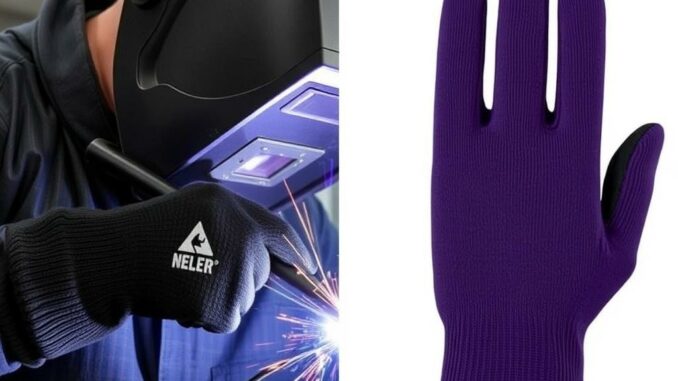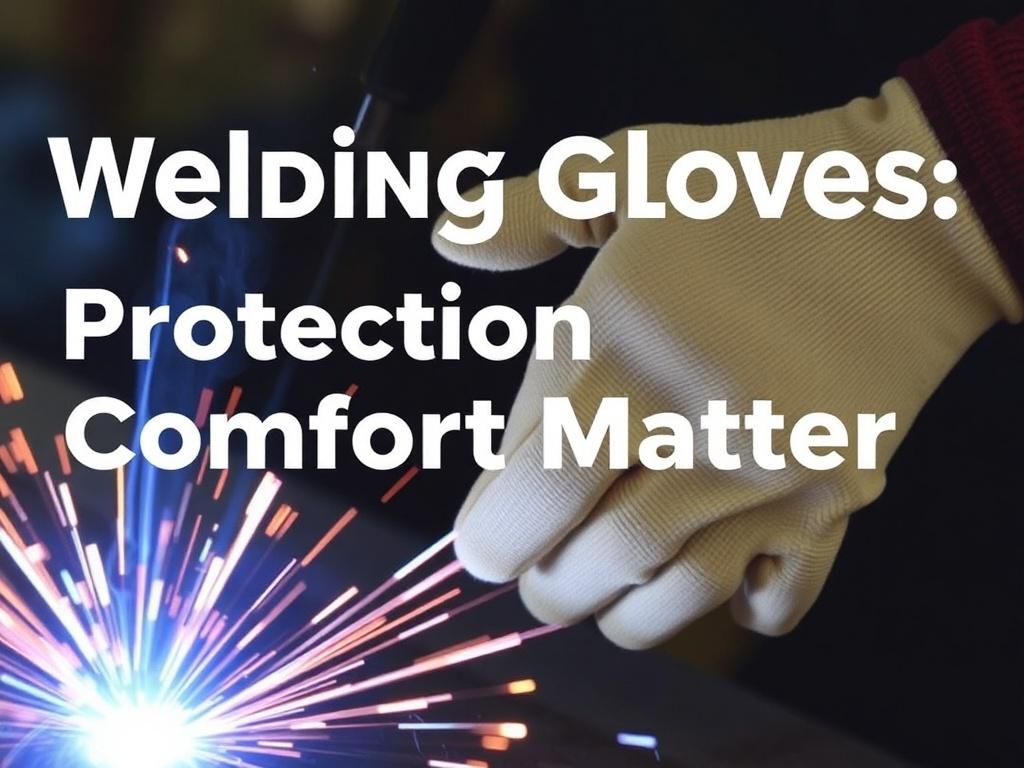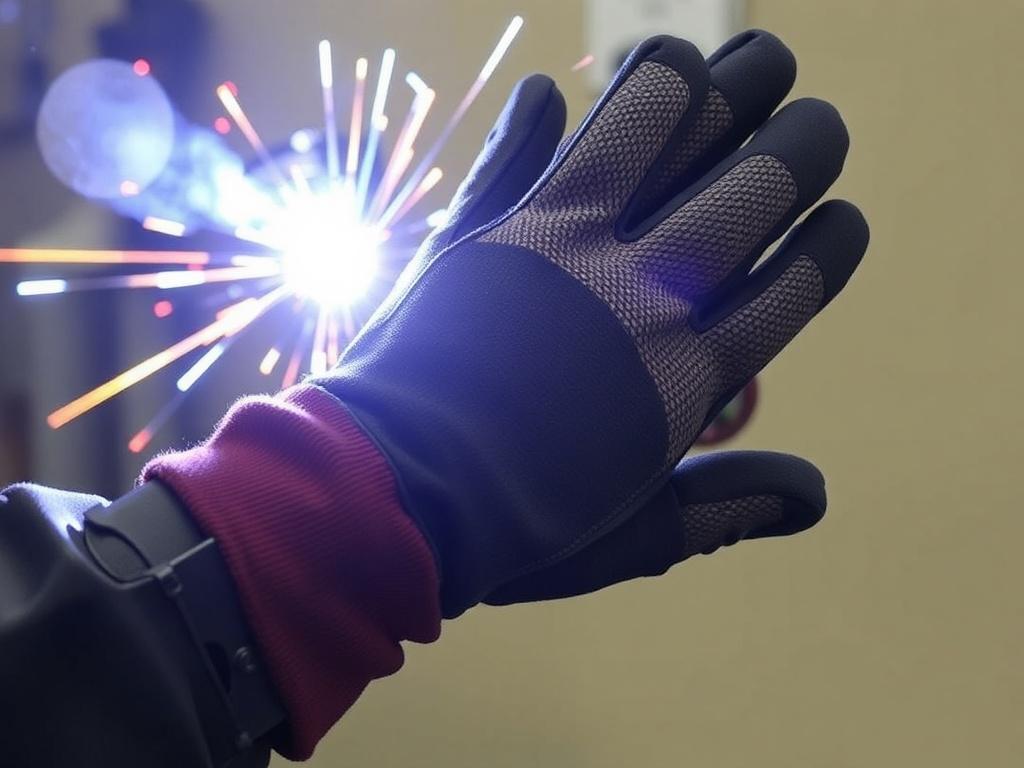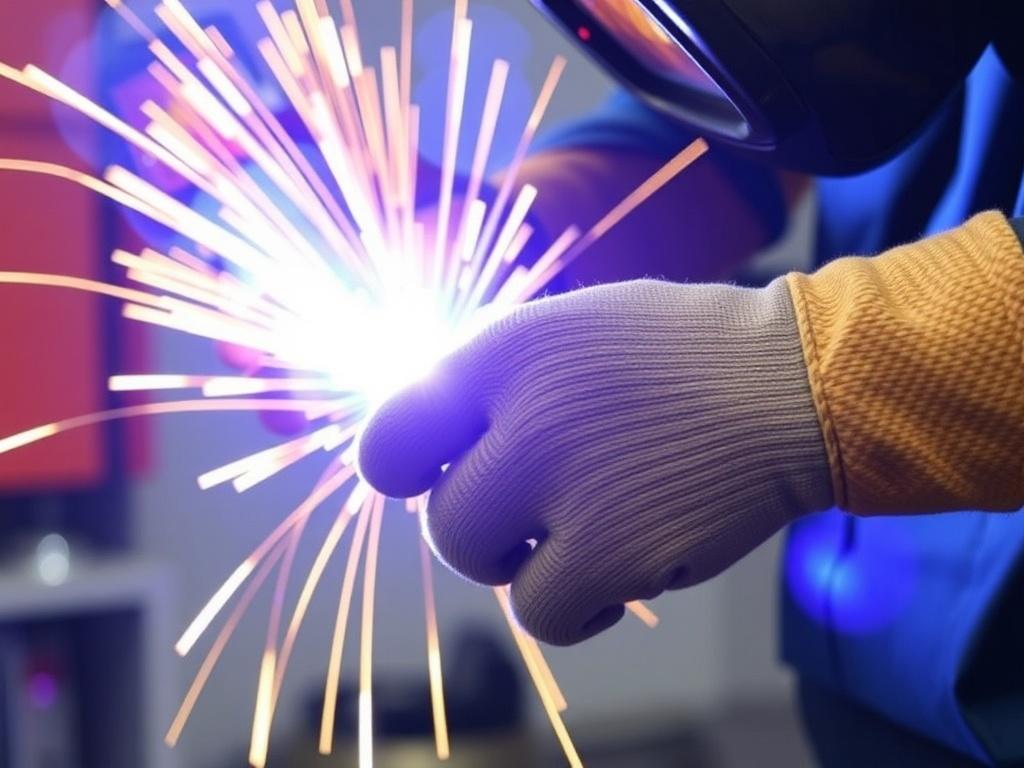
If you’ve ever watched a welder at work, you probably noticed how important their gloves are. These aren’t just any gloves—they’re a vital piece of protective gear that keeps hands safe from the intense heat, sparks, and sharp metal edges involved in welding. But it’s not just about protection; comfort is equally important. Welding gloves must balance durability, safety, and flexibility, allowing welders to work efficiently without sacrificing their wellbeing.
In this comprehensive guide, we’ll explore everything you need to know about welding gloves. From materials and design to common types and maintenance tips, you’ll gain insight into how these gloves shield hands while providing comfort during long hours of work. Whether you’re a professional welder, a hobbyist, or just curious about protective gear, this article will inform and engage you.
Why Welding Gloves Matter

Welding is a demanding task. It involves high temperatures, molten metal, UV radiation, and flying sparks. Without proper hand protection, the risks include burns, cuts, and serious injuries. Welding gloves play a crucial role in minimizing these dangers by providing a barrier that resists heat and physical damage.
But protection alone isn’t enough. Gloves that are too bulky or stiff can make it difficult to handle small parts or precise movements. This not only slows down the work but can also lead to accidents. Thus, comfort and dexterity are just as critical. The ideal gloves strike a perfect balance, giving welders confidence to work safely and efficiently.
The Risk Factors for Welders’ Hands
Understanding what threats welding gloves guard against can shed light on their design needs:
- Heat and Flames: Welding produces intense heat and sparks capable of causing severe burns. Gloves must resist these temperatures for prolonged periods.
- Molten Metal Splash: Small droplets of molten metal can fly off during welding, damaging skin almost instantly on contact.
- Abrasion and Cuts: Handling sharp metal pieces and tools puts hands at risk for cuts and scrapes.
- Electric Shock: Welders work with electrical equipment. Although gloves primarily insulate against burns, they can also provide some protection from electric shocks.
- Sun and UV Exposure: Prolonged welding emits ultraviolet radiation that can harm unprotected skin, necessitating gloves that cover hands fully.
Materials Used in Welding Gloves

The effectiveness of welding gloves in protection and comfort largely depends on the materials used. Different materials offer unique benefits and drawbacks. Here’s a breakdown of the most common ones:
Leather: The Gold Standard
Leather is the most popular material for welding gloves because it offers excellent durability, heat resistance, and flexibility. But there are several types of leather that affect glove performance differently:
| Type of Leather | Characteristics | Best Use |
|---|---|---|
| Cowhide | Durable, moderately thick, good heat resistance, affordable | General purpose welding, medium-duty tasks |
| Goatskin | Soft, flexible, abrasion resistant, moderate heat protection | Precision welding, tasks that require dexterity |
| Pigskin | Strong, breathable, heat resistant, less flexible than goatskin | High heat applications, rugged environments |
| Deerskin | Very soft, highly flexible, moderate durability | Light welding, tasks needing fine motor skills |
Other Materials and Linings
Alongside leather, some gloves feature additional materials to enhance comfort and protection:
- Kevlar Stitching: Kevlar threads are heat resistant and reinforce seams, extending gloves’ lifespan.
- Cotton/Fleece Linings: These provide insulation and keep hands comfortable during cold conditions.
- Aluminized Fabrics: Used in gloves designed for extremely high temperatures, reflecting heat away from hands.
Types of Welding Gloves
Welding isn’t a one-size-fits-all task. Depending on the welding method and workplace environment, glove requirements vary. Let’s look at the common types of welding gloves and what makes each one unique.
MIG Welding Gloves
MIG welding (Metal Inert Gas) involves high speeds and continuous wire feeding, which means welders need gloves that combine protection with dexterity. Typically, MIG welding gloves are made from medium-weight cowhide or goatskin leather to provide a good balance of sturdiness and flexibility.
TIG Welding Gloves
TIG welding (Tungsten Inert Gas) demands the most precision. Welders often need to handle small parts and adjust the torch carefully, so extra dexterity is required. TIG gloves are usually thinner than other types, often using supple goatskin or deerskin with cotton linings for better feel and control.
Stick Welding Gloves
Also known as Shielded Metal Arc Welding (SMAW), stick welding produces a lot of sparks and heat. Gloves used here are typically heavy-duty, made of thick cowhide with additional reinforcement for the palm and fingers. The goal is to ensure maximum protection despite some loss in dexterity.
Specialty Gloves
For specific needs, specialty gloves exist. These include:
- Heat-Resistant Gloves: Made with aluminized materials or extra insulation for high-temperature environments.
- Cut-Resistant Gloves: Designed with Kevlar or similar materials for tasks involving sharp edges.
- Electric Arc Flash Gloves: For welders working under electric arc conditions, providing extra protection against arc flash hazards.
How to Choose the Right Welding Gloves

Picking the perfect welding gloves is more than just selecting the most expensive or popular model. Several factors influence the choice, and balancing them will lead you to the best fit for your needs.
Assess Your Welding Tasks
What type of welding do you primarily perform? MIG, TIG, stick, or specialty welding? Different gloves cater to different environments, so knowing your main activity helps narrow down options.
Consider Hand Size and Fit
Proper fit is crucial. Gloves that are too tight restrict movement and blood flow, while loose gloves reduce control and can be dangerous. Always check size charts and, if possible, try gloves on to ensure a snug but comfortable fit.
Balance Between Protection and Dexterity
Think about the level of heat exposure and the need for finger movement. Heavy gloves offer more protection but less flexibility. If your work involves precision, look for lighter options with high-quality leather.
Look for Reinforced Areas
Palm and finger reinforcements add durability and protect against abrasions. Additional layers in these zones extend glove life, especially for welders handling rough workpieces frequently.
Check for Certification and Safety Standards
Some gloves comply with specific standards like EN 388 (mechanical risks) or EN 407 (thermal risks). These certifications indicate testing and reliability, which can help in making an informed choice.
Maintaining and Caring for Welding Gloves
Proper care can dramatically extend the life of your welding gloves. Here are practical tips to keep your gloves in prime condition:
Cleaning Your Gloves
Leather gloves shouldn’t be thrown into washing machines or soaked in water. Instead, wipe them down with a damp cloth after use to remove dirt and grime. For deeper cleaning, use leather cleaners designed for thick leather goods. Avoid harsh chemicals that can dry or damage the material.
Drying Properly
If gloves become wet, air dry them naturally. Keep them away from direct heat sources like radiators or sunlight, which can cause the leather to crack.
Storing Correctly
Store gloves in a cool, dry place, ideally flat and not scrunched up. This prevents material deformation and creasing.
Inspect Regularly
Check for wear, holes, or broken stitching before every use. Replace gloves showing significant damage to ensure ongoing protection.
Common Welding Glove Problems and Solutions
Even the best gloves can encounter issues. Here are some problems welders face and ways to address them:
| Problem | Cause | Solution |
|---|---|---|
| Excessive sweating and discomfort | Gloves lacking breathable lining or too thick | Choose gloves with cotton or mesh linings; consider lighter gloves for precision work |
| Limited finger movement | Overly bulky or stiff leather | Select more flexible materials like goatskin or thinner leather models |
| Quick wear and tear | Poor quality leather or rough handling | Invest in higher-quality gloves, use reinforcements, and follow proper maintenance |
| Glove slipping off | Wrong size or worn elastic cuffs | Measure your hand carefully and replace gloves with damaged cuffs |
Top Welding Glove Brands to Consider
If you’re searching for trusted welding gloves, these brands have built solid reputations by blending protection and comfort:
- Tillman: Known for durable gloves with various options suited for MIG, TIG, and stick welding.
- Revco: Offers affordable, quality gloves for hobbyists and professionals alike.
- Lincoln Electric: A leader in welding equipment, also providing well-rated gloves.
- Ironclad: Combines modern materials and ergonomic design for enhanced comfort.
- Hobart: Produces gloves designed with input from welders, balancing protection and dexterity.
Frequently Asked Questions (FAQs) About Welding Gloves
How often should welding gloves be replaced?
The lifespan depends on frequency of use and care. Heavy-duty gloves may last several months to a year with proper maintenance, while thinner gloves might need replacement every few weeks. Always replace gloves when you notice significant wear or damage.
Are welding gloves flame resistant?
Yes, most welding gloves are made from flame-resistant materials like leather and feature Kevlar stitching. However, the level of flame resistance varies, so check product specifications for your needs.
Can I use regular leather gloves for welding?
Regular leather gloves might offer some protection but lack heat resistance and reinforced stitching required for welding. It’s safer to use gloves designed specifically for welding.
Do welding gloves protect against electric shock?
While welding gloves help insulate from minor shocks, they are not a substitute for specialized electrical gloves designed for high-voltage protection.
What glove features improve comfort?
Comfort features include breathable linings, ergonomic design, flexible materials, and adjustable cuffs. These reduce hand fatigue and improve movement.
Conclusion: Prioritizing Protection and Comfort for Welding Gloves
Welding gloves are more than just a tool—they’re an essential shield that safeguards your hands from the many hazards of welding. When purchasing gloves, prioritize both protection and comfort. Consider the specific welding process, choose the right materials, ensure proper fit, and maintain your gloves well.
Remember, your hands are your most valuable tools when welding. Investing in quality welding gloves that balance safety and dexterity will boost your performance and help keep you injury-free. With the comprehensive information provided here, you’re now equipped to make smart decisions about welding gloves that truly matter.
Stay protected, comfortable, and confident in every weld you make!
